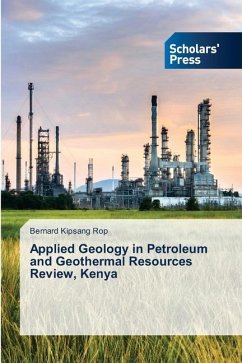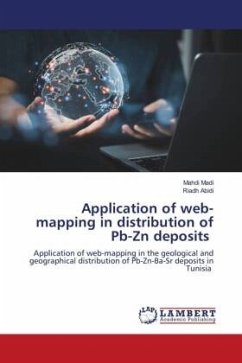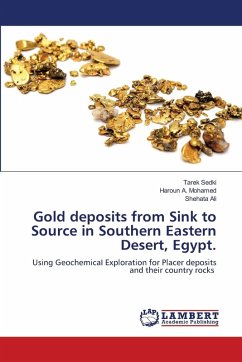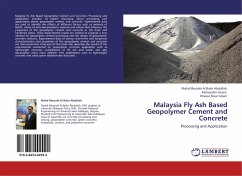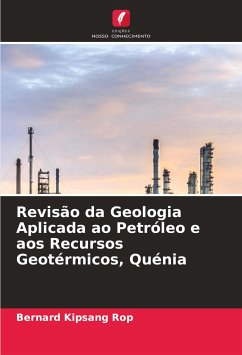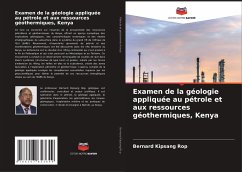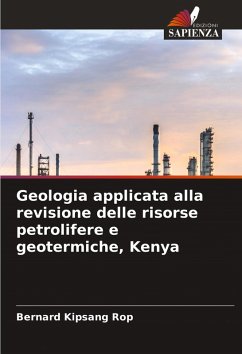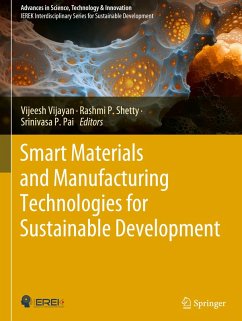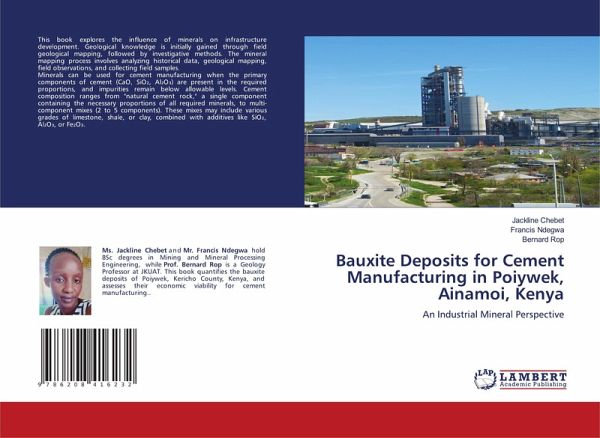
Bauxite Deposits for Cement Manufacturing in Poiywek, Ainamoi, Kenya
An Industrial Mineral Perspective
Versandkostenfrei!
Versandfertig in 6-10 Tagen
29,99 €
inkl. MwSt.

PAYBACK Punkte
15 °P sammeln!
This book explores the influence of minerals on infrastructure development. Geological knowledge is initially gained through field geological mapping, followed by investigative methods. The mineral mapping process involves analyzing historical data, geological mapping, field observations, and collecting field samples.Minerals can be used for cement manufacturing when the primary components of cement (CaO, SiO2, Al2O ) are present in the required proportions, and impurities remain below allowable levels. Cement composition ranges from "natural cement rock," a single component containing the nec...
This book explores the influence of minerals on infrastructure development. Geological knowledge is initially gained through field geological mapping, followed by investigative methods. The mineral mapping process involves analyzing historical data, geological mapping, field observations, and collecting field samples.Minerals can be used for cement manufacturing when the primary components of cement (CaO, SiO2, Al2O ) are present in the required proportions, and impurities remain below allowable levels. Cement composition ranges from "natural cement rock," a single component containing the necessary proportions of all required minerals, to multi-component mixes (2 to 5 components). These mixes may include various grades of limestone, shale, or clay, combined with additives like SiO2, Al2O , or Fe2O .






